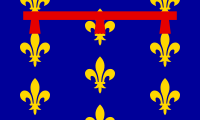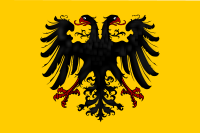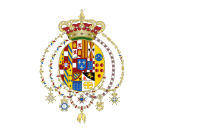|
Flag of Naples
 The flag of Naples is a vexillological symbol of the city of Naples, the capital of the Southern Italian region of Campania. The current flag representing the city consists of two equal-sized rectangles: golden yellow on the left and red on the right side. Historically, the flag of Naples was a national flag during the existence of the Kingdom of Naples. Several different flags were used throughout its history, depending on who controlled the nation at the time. Perhaps the most prominent flags associated with the kingdom are the original Angevin flag, the Bourbon flag, and the senyera (used when the country was part of the Crown of Aragon). HistoryNaples has had other flags in the past, including flags of the Kingdom of Naples. After Naples was united with Sicily in 1442, the flag used the colours of Aragon. Starting in 1735, the flag of the Kingdom of Naples was green and white.[1] When Naples was part of the Parthenopaean Republic (1799), the flag had 3 vertical stripes, blue, yellow and red. After 1806, the flag was composed of three stripes of white, red and black. Both horizontal and vertical versions were in use. This flag was used up to 1808. When Joachim Murat was the king of Naples (1808–1815), the corners of the flag had 2 red and 2 black triangles, and the coat of arms was inside a rhombus in the center. In 1811 Murat changed the flag to blue with a rectangle in the center whose border was checkered white and red. The coat of arms was on the left side of the rectangle (the civil flag had no coat of arms). From 1820 through 1821, the flag of Naples had 3 horizontal stripes colored blue, black and red. The current flag has been in use since 1821. Historical flagsNaples has formed the basis of many kingdoms and republics during its history. Below are some historical flags associated with Neapolitan domains.
References
|








